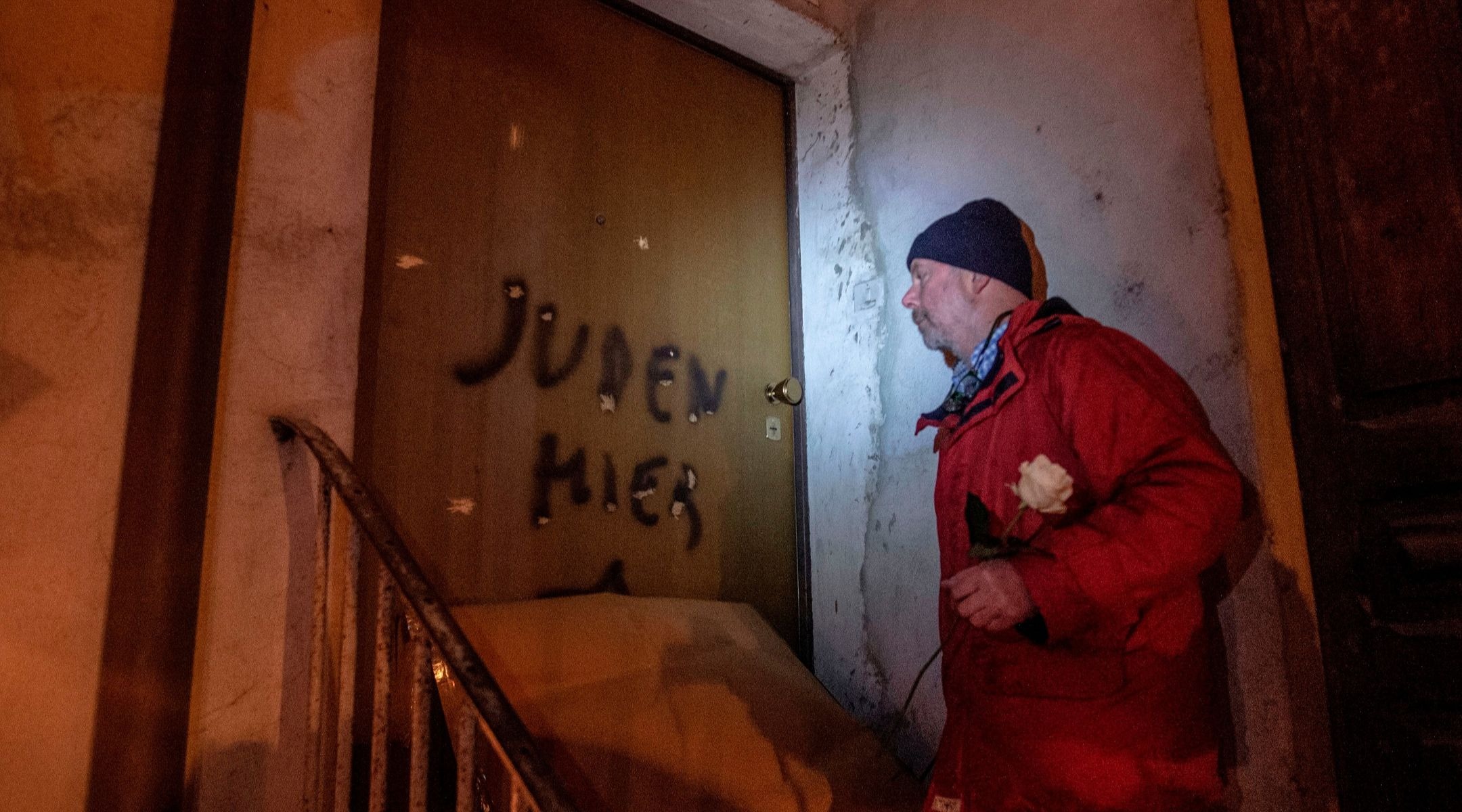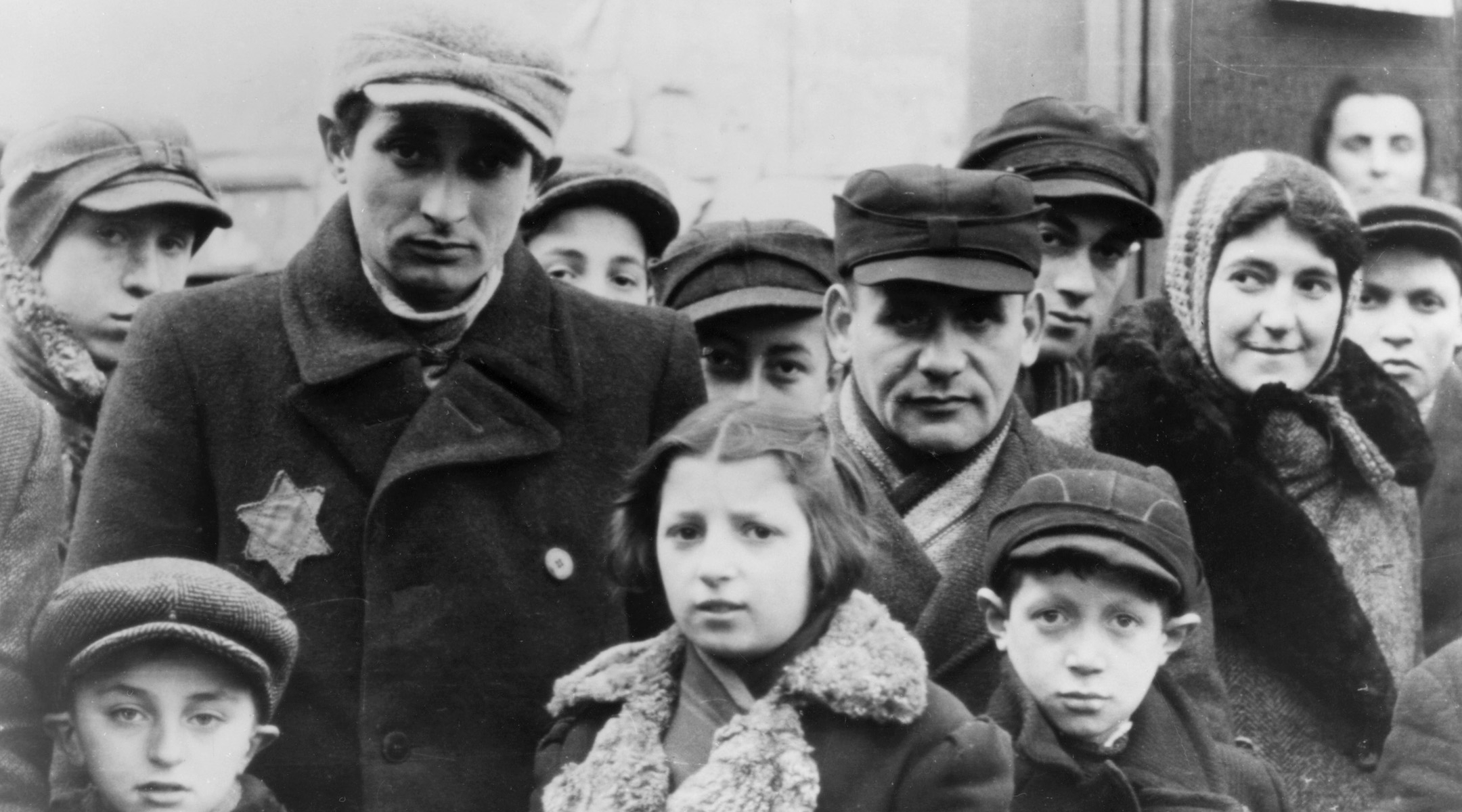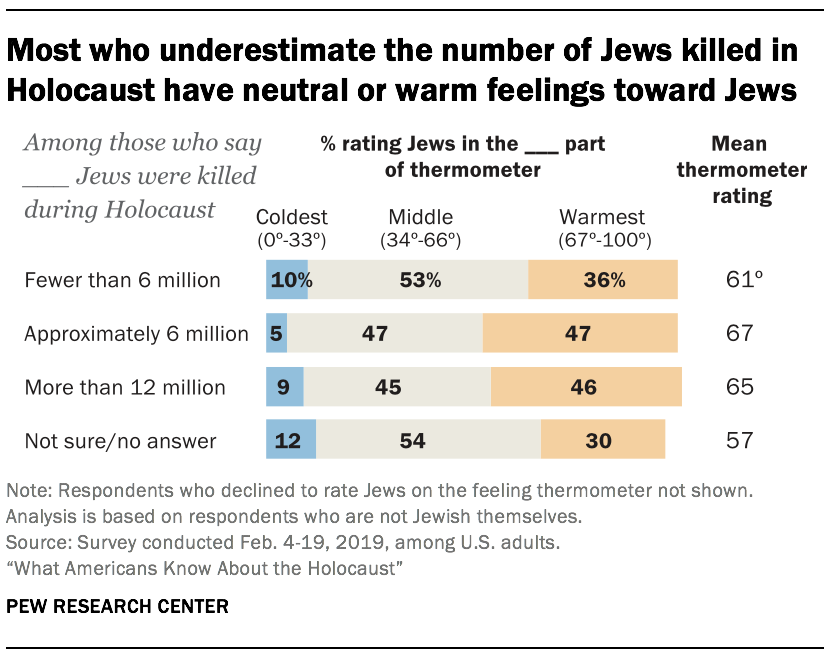Behind the Aegis
Behind the Aegis's Journal(Jewish Group) n January 27, 1945, Soviet troops liberated Auschwitz. The date is now consecrated as
(THIS IS THE JEWISH GROUP! RESPECT!!)On January 27, 1945, Soviet troops liberated Auschwitz. The date is now consecrated as International Holocaust Remembrance Day, as the world vowed never to allow murderous anti-Semitism to recur. Yet 75 years later, attacking Jews has once again become socially acceptable in many countries—across the left-right ideological spectrum, and among different groups that blame Jews for their grievances and oppression.
The recent eruptions of anti-Semitism in America have awakened us to a prejudice that has long resided, in quiet ways and in many forms, in this country. And the part of it that now disguises itself as anti-Zionism—hatred of the Jewish state that was established in the wake of the Holocaust as a refuge for Jews—has even seemed, to some, virtuous, a sentiment they believe puts them in humanity’s moral vanguard.
And anti-Semitism has returned, in part, because the general public’s knowledge about the Holocaust—of what exactly it was, who exactly was murdered in it, how many were killed, and how anti-Semitism spawned it—has diminished. For a time, that knowledge discredited anti-Semitism and those who indulged in it. But the passing of survivors who experienced the Holocaust and could testify to it, the denial and minimization of the Holocaust, and the hijacking of the word itself to advance numerous other causes, great and small, all combined to diminish its memory. The horrifying knowledge of where anti-Semitism can lead has been, in large measure, lost in a miasma of forgetting, ignorance, denial, confusion, appropriation, and obfuscation.
As a former director of the United States Holocaust Memorial Museum, many of whose uncles, aunts, and cousins, and a grandmother, were murdered in the Holocaust; as a professor who has taught a generation of students about the memory of the Holocaust; as a psychiatrist who is well aware of humanity’s repertoire of hatred and brutality; as a professor of international affairs; and as a student of Jewish history who is deeply aware of the many times masses of Jews were murdered or expelled simply because they were Jews, I watch anti-Semitism’s global resurgence, so soon after the Holocaust, with alarm and foreboding. Could murderous anti-Semitism, on a large scale, resume in our time? Could “never again,” vowed so solemnly and so repeatedly after the Holocaust, revert to “yet again”?
More...
'I see it as a chance to finally say goodbye': Auschwitz survivors tell their stories
Five survivors of Auschwitz, one of whom is returning for the first time since her incarceration, have told their stories to the Guardian to mark the 75th anniversary of the liberation of the Nazi extermination camp, which is being commemorated on Monday.
Aged in their late 80s to mid-90s, they are among the last of a few hundred remaining survivors, and told their stories from their homes in Melbourne, Montreal, Frankfurt, Berlin, and Esslingen, Switzerland.
Catalina Adam: ‘I’m anxious about the trip, but I feel a responsibility beyond myself’
Catalina Adam, 88, from Piscolt, Romania, was deported to Auschwitz in May 1944. She was being held in Ober-Hohenelbe forced labour camp when it was liberated from the Nazis in May 1945. She lives in Berlin. It will be the first time she has returned to Auschwitz since her imprisonment.
I’m from a small village in Romania, where about four or five of the families were Jewish, a mix of Romanians and Hungarians. My parents had a mill, and we grew wheat and maize which we turned into flour, as well as sunflowers, which we turned into oil with a press, which was very popular in the area. There was four years of schooling offered for the girls, and 12 for the boys. I told my father when I was 13 that I wanted to study and rather than giving a dowry to my husband’s family, as was the practice, I wanted to invest it in education. My father was happy about it. In the meantime, I trained as a florist. I had dreamed of becoming a pianist or a doctor, but Auschwitz got in the way of all of that.
At home we spoke both Romanian and Hungarian. We weren’t orthodox Jews, but we did celebrate the festival days and enjoyed them, and went to the synagogue.
more...
Anti-Semitic graffiti painted on door of Italian Holocaust survivor's home
Graffiti including a Star of David and the words “Juden Hier,” or Jews Here, were painted on the door of the son of an Italian Holocaust survivor in Italy.
Lidia Beccaria Rolfi, a resistance fighter and survivor of the Ravensbrueck concentration camp in Germany, lived in the home in Mondovi, in the northwest part of the country, until her death in 1996.
Her son, Aldo, currently lives in the home. The graffiti appeared after Aldo Rolfi published an article about anti-Semitism and remembering his mother in honor of International Holocaust Remembrance Day on Jan. 27, The Associated Press reported.
Hundreds of people carrying candles and some carrying yellow stars came out on Friday evening in support of Rolfi and to protest against anti-Semitism.

more...
The Auschwitz Protocol
ON THE 13TH April, 1942 our group, consisting of 1,000 men, was
loaded into railroad cars at the assembly camp of SERED. The doors
were shut so that nothing would reveal the direction of the journey, and
when they were opened after a long while we realized that we had
crossed the Slovak frontier and were in ZWARDON.
The train had until then been guarded by Hlinka men, but was now
taken over by SS guards. After a few of the cars had been uncoupled
from our convoy, we continued on our way arriving at night at
AUSCHWITZ, where we stopped on a sidetrack.
The reason the other cars were left behind was appar-ently the lack of
room at AUSCHWITZ. They joined us, how-ever, a few days later. Upon
arrival we were placed in rows of five and counted. There were 643 of us.
After a walk of about 20 minutes with our heavy packs (we had left
Slovakia well equipped), we reached the concentration camp of
AUSCHWITZ.
We were at once led into a huge barrack where on the one side we had
to deposit all our luggage and on the other side completely undress and
valuables behind. Naked, we then proceeded to an adjoining barrack
where our heads and bodies were shaved and disinfected with Lysol. At
the exit every man was given a number which began with 28,600 in
consecutive order
With this number in hand we were then herded to a third barrack where
so-called registration took place. This consisted of tattooing the
numbers we had received in the second barrack on the left side of our
chests. The extreme brutality with which this was effected made many
of us faint. The particulars of our identity were" also recorded.
Read: http://vrbawetzler.eu/img/static/Prilohy/The-Auschwitz-Protocol.pdf
---------------------------------------------------------------------------------------------------------
The Auschwitz Protocols, also known as the Auschwitz Reports, and originally published as The Extermination Camps of Auschwitz and Birkenau, is a collection of three eyewitness accounts from 1943–1944 about the mass murder that was taking place inside the Auschwitz concentration camp in German-occupied Poland during the Second World War.[1][2] The eyewitness accounts are individually known as the Vrba-Wetzler report, Polish Major's report, and Rosin-Mordowicz report.[3]
The reports were compiled by prisoners who had escaped from the camp and presented in their order of importance from the Western Allies' perspective, rather than in chronological order.[3] The escapees who authored the reports were Rudolf Vrba and Alfred Wetzler (the Vrba-Wetzler report); Arnost Rosin and Czesław Mordowicz (the Rosin-Mordowicz report); and Jerzy Tabeau (the "Polish Major's report" ).[3]
The Vrba-Wetzler report was widely disseminated by the Bratislava Working Group in April 1944, and with help of the Romanian diplomat Florian Manoliu, the report or a summary reached—with much unfortunate delay—George Mantello (Mandel), El Salvador Embassy First Secretary in Switzerland, via Swiss Vice-Consul Carl Lutz in Budapest[4]. Mantello immediately publicized it. This triggered large-scale demonstrations in Switzerland, sermons in Swiss churches about the tragic plight of Jews and a Swiss press campaign of about 400 headlines protesting the atrocities against Jews. The events in Switzerland and possibly other considerations led to threats of retribution against Hungary's Regent Miklós Horthy by President Roosevelt, Winston Churchill and others. This was one of the main factors which convinced Horthy to stop the Hungarian death camp transports.[5] The full reports were published by the United States War Refugee Board on 26 November 1944 under the title The Extermination Camps of Auschwitz (Oświęcim) and Birkenau in Upper Silesia.[1][6] They were submitted in evidence at the Nuremberg Trials as document number 022-L, and are held in the War Refugee Board archives in the Franklin D. Roosevelt Presidential Library and Museum in Hyde Park, New York.[6]
It is not known when they were first called the Auschwitz Protocols, but Randolph L. Braham may have been the first to do so. He used that term for the document in The Politics of Genocide: The Holocaust in Hungary (1981).[6]
https://en.wikipedia.org/wiki/Auschwitz_Protocols
Most American adults don't know 6 million Jews were killed in the Holocaust, survey finds
Half of American adults are unaware of basic facts regarding Nazism and the Holocaust, including the number of Jews who were killed and how Nazis came to power.
Those are some of the findings of a new study by the Pew Research Center released on Tuesday, about a week ahead of the 75th anniversary of the liberation of Auschwitz. The study asked nearly 13,000 respondents, Jewish and non-Jewish adults and teenagers, four questions about the Holocaust.
Most knew that the Holocaust took place between 1930 and 1950, and that Nazi ghettos were areas of cities where Jews were forced to live. But only 45 percent knew that 6 million Jews died in the Holocaust. About 12 percent each thought that the number was lower or higher, and 29 percent did not know the answer. Among the teens, only 38 percent knew the number of Jews killed.
Those numbers, however, are higher than those reported in a 1993 survey of U.S. adults commissioned by the American Jewish Committee. That survey found only 35 percent of adults knew the number of Jews killed in the Holocaust, and only a slim majority said the word “Holocaust” referred to the extermination of Jews — as opposed to 84 percent of U.S. adults in the Pew survey.

more...
Pew Survey -- What Americans Know About the Holocaust

Interesting subcategory: Jews, atheists and agnostics get more questions right about the Holocaust
See also: Half of Americans don’t know 6m Jews were killed in Holocaust, survey
(Jewish Group) Simon Schama on Auschwitz and the new anti-Semitism
“P.J.”
The letters were painted in ghostly white, a foot high on the wall, faded but legible beneath the veil of grime. I was seven years old when I noticed them, waiting with my father for the arrival of uncles and aunts at Southend railway station. What did the gnomic inscription mean? “Nothing; never mind,” he answered, but I remember the uneasiness written on his usually frank face. Later that day, when I asked again, he told me. The initials stood, he said, for “Perish Judah”. “Bad people, stupid people put them there; that’s why they’re rubbed out.”
I was struck (and scared) by the archaic ring of it, as if drawn from an Old Testament passage recording the proclamation of a Mesopotamian tyrant resolved to raze Jerusalem to the ground. My parents thought the graffito a relic of the Mosley years in the 1930s, when they and all their East End friends and neighbours had stood firm against the fascist march on Cable Street. But since the sighting was in 1952, I now realise there was another possibility.
Five years before, over a hot bank holiday weekend in August 1947, there had been a frightening outbreak of anti-Semitic rioting — especially violent in Manchester, Liverpool and Glasgow. The trigger had been the hanging in Palestine of two British army sergeants, Clifford Martin and Mervyn Paice, by the Jewish paramilitary group Irgun Zvai Leumi, three of whose members had been executed by the British authorities. The Irgun had committed terrorist acts including the bombing of the King David Hotel. The Jewish press in Britain and community leaders expressed horror and repugnance at the execution of the sergeants. But their condemnation was drowned out in the press uproar.
The popular mood in that summer of bitter postwar austerity was in any case ugly. The usual mutterings about Jewish profiteering surfaced. But the targets in 1947 were modest Jewish high street shopkeepers whose premises were smashed up, windows daubed or shattered. Cheetham Hill in Manchester was carpeted with broken glass; the devastation severe enough to remind many of the Blitz. Just two years after the war had ended there was no shortage of those eager to hold all Jews responsible for the action of militant fanatics in Palestine. An anti-Semitic orator (and ex sergeant-major) called John Regan, speaking to a crowd of 700 in Eccles, bellowed: “Hitler was right. Exterminate every Jew — every man, woman and child.” “Hang all Jews” screamed another sign; there were similar anti-Semitic actions in Bolton, Holyhead, Hendon and, as it turned out, Southend.
more...
It's Simon Schama!
Take it from a Holocaust survivor: We need Non-Jews to stand up against anti-Semitism
As a Holocaust survivor, I know how hatred spreads until it is inescapable. When I was a child, the crimes committed against Jews and others who were persecuted in the Holocaust were part of my daily life.
I grew up in Compiègne, France in the 1940s. Anti-Semitism came to my city and overwhelmed the streets. It infiltrated my school. I was called a “dirty Jew” by all but one of my classmates; the one who was an ally has remained a friend to this day. But she was the exception. By almost everyone else, I was made to feel like a piece of dirt.
Anti-Semitism spread across Compiègne until it occupied the city completely. What started as hate crimes that were disregarded grew to be the active policing of the Jewish people.
The responsibility is on each of us, Jews and non-Jews alike, to find ways to stamp out hatred, change course and bridge what divides our nation. by the Forward
I remember when Jews had to start wearing the yellow star, and when we had to sit in the back of the movie theaters, until we couldn’t go to the movies at all. I remember going to my favorite park, but only being able to use one part of it, and sit on particular benches. I hope we never get to that point again, but that all started with anti-Semitic attacks that grew more frequent throughout my childhood.
more...
Profile Information
Gender: Do not displayMember since: Sat Aug 7, 2004, 03:58 AM
Number of posts: 53,936